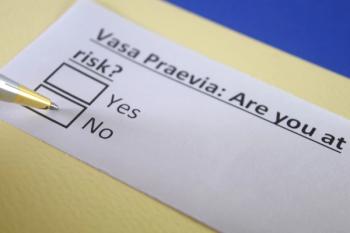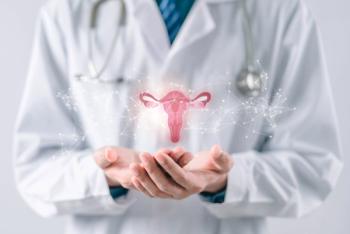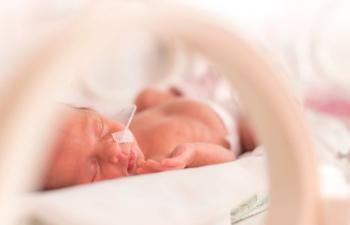
Assisted Reproductive Technology and the Risk of Birth Defects
SMFM 27th Annual Meeting 2007
If you are having trouble viewing the Windows Media video,
read the abstract:
Transcript
Alix Boyle: Hi, this is Alix Boyle reporting for OBGYN.net. I am here with Darine El-Char from the University of Ottawa. Tell us about your research.
Darine El-Char, MD: We looked at the birth defects in assisted human reproduction-conceived infants and we did so by looking at the database from Ontario, called the Niday database, it is a perinatal database, and we looked at infants conceived in 2005. From those, we identified 61,000 deliveries that had the information about assisted human reproduction. We isolated about 1,300 children who were conceived by the different assisted human reproduction techniques, such as ovulation induction, intra-uterine insemination and in vitro fertilization, and then we looked at the risk of birth defects in that population and these birth defects had to be diagnosed either prenatally or at birth. We also looked at the birth defects in different categories of anomalies, such as gastric-intestinal, cardiovascular, musculoskeletal, facial defects or neural tube defects. So that summarizes what we did and what we have found is, the major conclusion is that there is an increased risk of birth defects in the assisted human reproduction group that we saw and that is compared to our naturally conceived controls. The odds we show in that case, which was adjusted for maternal age, smoking, infant parity and obstetrical complications, was at 1.58. When we looked at the different anomalies, the gastro-intestinal anomalies were the highest, followed by the cardiovascular and musculoskeletal defects. When we looked at the different types of fertility treatments, there was a prevalence of 2.19% in the ovulation induction group and 2.66% in the IUI group. The prevalence was higher in the IVF group at 2.197%. But these are small groups when they are sub-divided so we need to interpret these results carefully, but it does give you an indication of a trend in these results.
Alix Boyle: That is really interesting. Why do you think that babies conceived with ART have a greater incidence of birth defects?
Darine El-Char, MD: For this, we definitely need more research, but the speculations are of three different major contributors to it. The one thing is that the fertility itself of the couples could be contributing to an increased risk of birth defects or the advanced age of the infertile couple. The other thing it could be is the medications used to induce ovulation or to maintain the luteal phase of pregnancy and finally there are the factors associated with the procedures themselves, such as the freezing, the thawing of the embryos and the delayed oocyte fertilization and so on.
Alix Boyle: That is very interesting. Thank you, Dr. El-Char.
Newsletter
Get the latest clinical updates, case studies, and expert commentary in obstetric and gynecologic care. Sign up now to stay informed.










